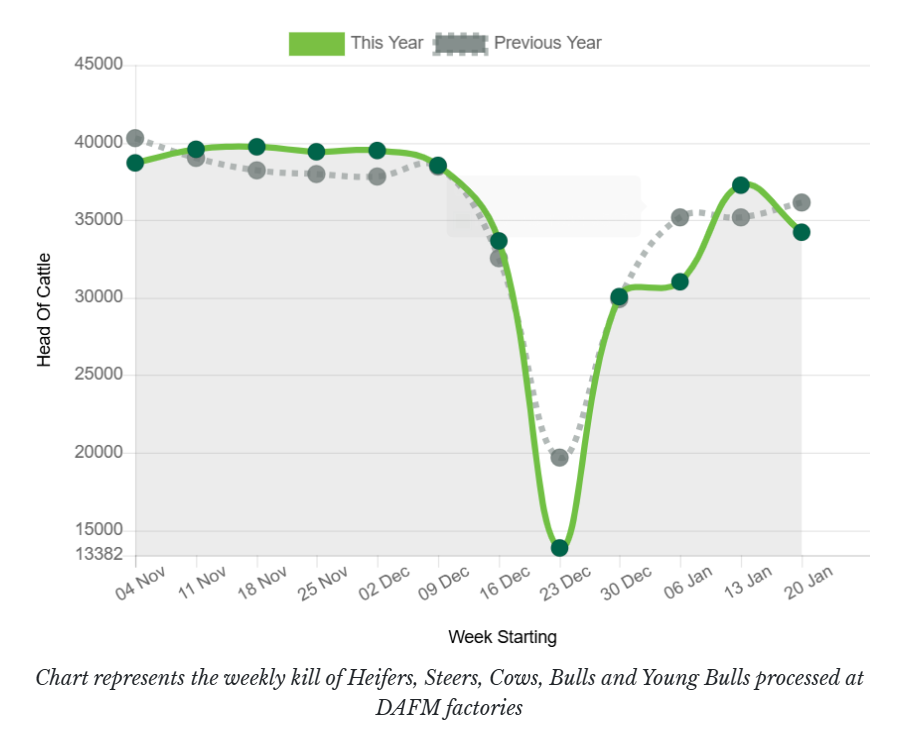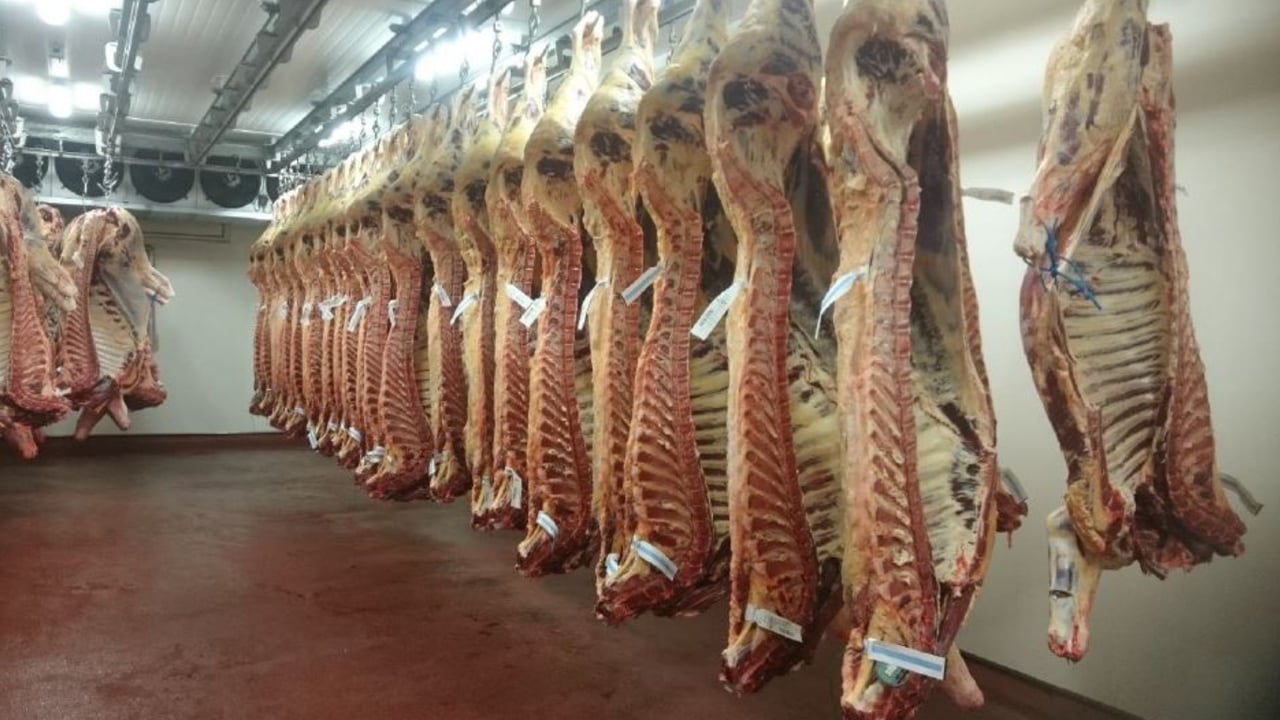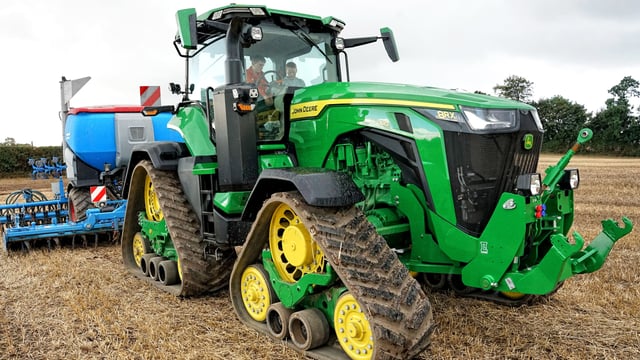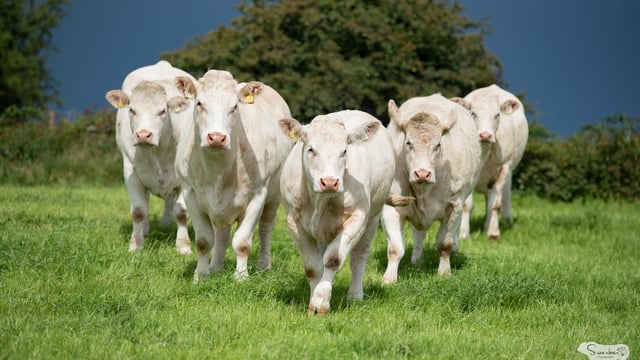Beef kill: Cow supplies fall over 5,500 head to date
National beef kill figures as of Sunday, January 26, show supplies of all types of cattle are remaining relatively steady with the exception of cows.
Cow kill numbers increased significantly in the past two years but trends to date this year suggest supplies of factory cows are starting to drop off.
Latest figures from the Department of Agriculture, Food and the Marine (DAFM) show that just under 28,800 cows have been slaughtered to date this year, back almost 5,700 head on the same time period last year.
The table below details the beef kill composition for the week ending Sunday, January 26, versus the same week of last year and the cumulative beef kill this year versus last year:
| Type | Week ending Sun, Jan 26 | Equivalent last year | Cumulative 2025 | Cumulative 2024 |
|---|---|---|---|---|
| Young bulls | 3,137 | 3,654 | 12,616 | 12,506 |
| Bulls | 269 | 399 | 1,002 | 1,260 |
| Steers | 11,434 | 11,772 | 45,572 | 45,804 |
| Cows | 7,918 | 9,396 | 28,787 | 34,465 |
| Heifers | 11,478 | 10,936 | 44,608 | 42,338 |
| Total | 34,236 | 36,157 | 132,585 | 136,373 |
As the table above indicates, the heifer kill is up over 2,000 head with the cow kill down almost 5,700 head to date this year, and all other categories remain relatively on par with last year.
The Status Red weather warning on Friday, January 24, as a result of Storm Éowyn resulted in some factories cancelling their kill for the day with others operating a half-day kill.
This likely had an impact on supplies last week with the total beef kill for last week down 3,000 head.
The graph below illustrates the overall weekly beef kill in the past 12 weeks versus the same 12 weeks of last year:

While cow supplies are back, prices have increased significantly with the average price paid for an O=3= cow increasing by 29c/kg in the past three weeks.
The strong upward trajectory in beef prices is being cautiously welcomed by key stakeholders in the beef industry.
While market outlooks suggest continued strong demand for beef into the foreseeable future, it appears to remain uncertain where beef price will begin to 'level off' at.





